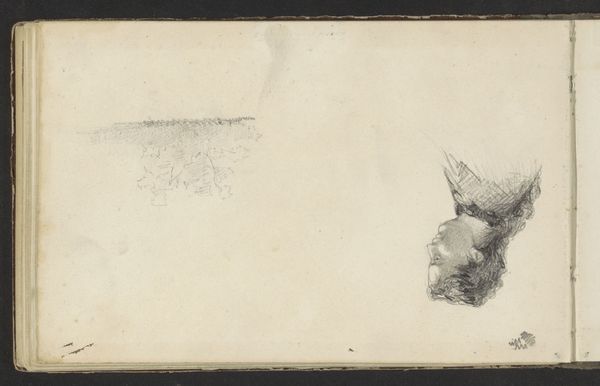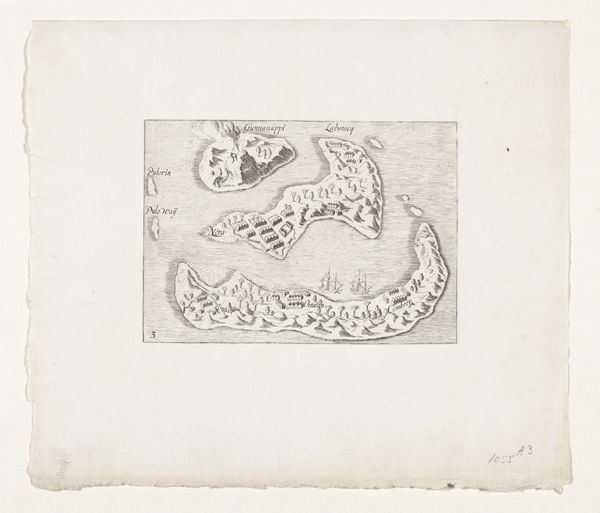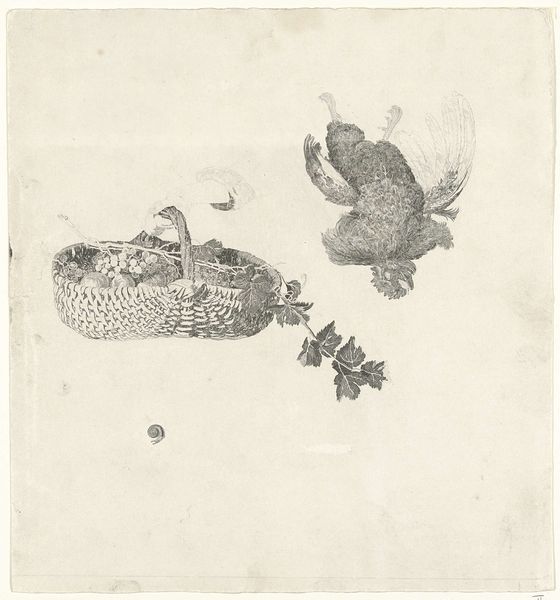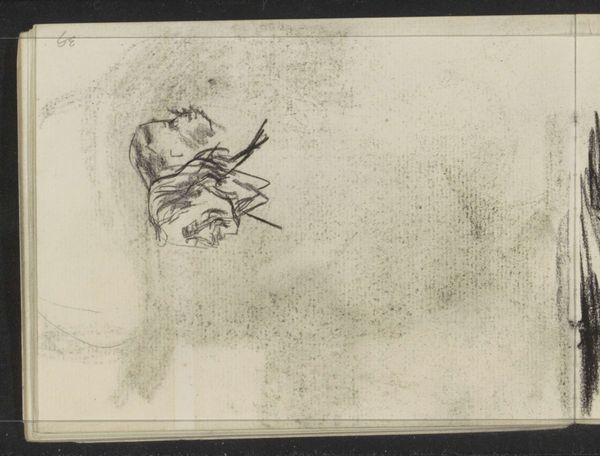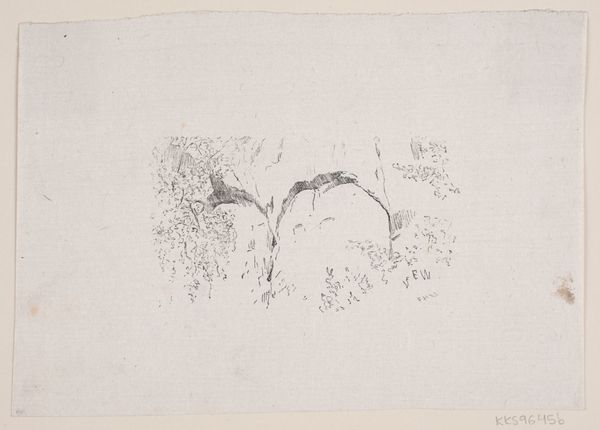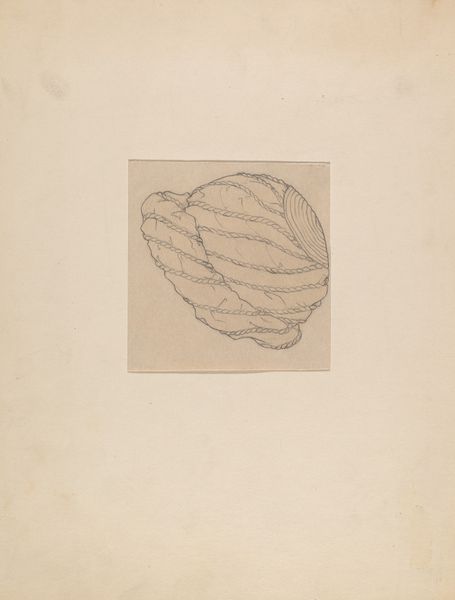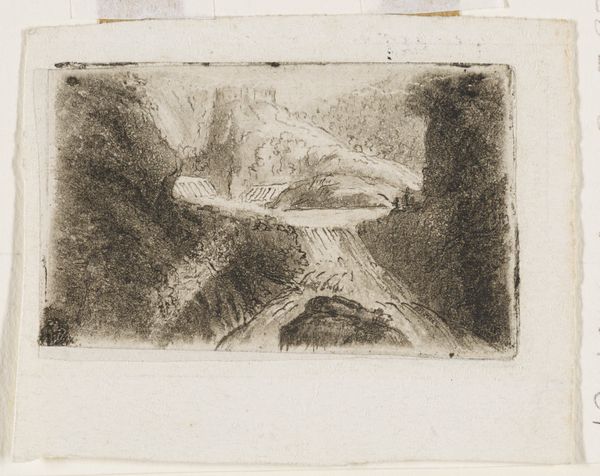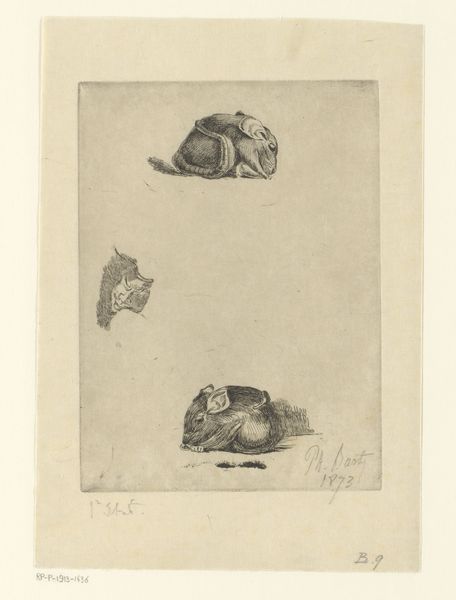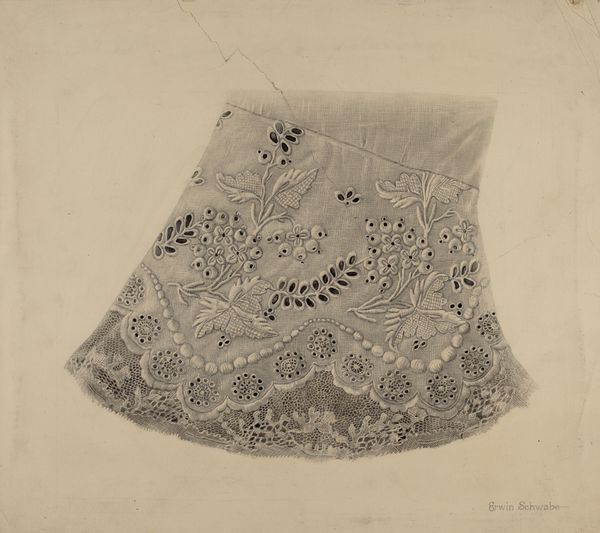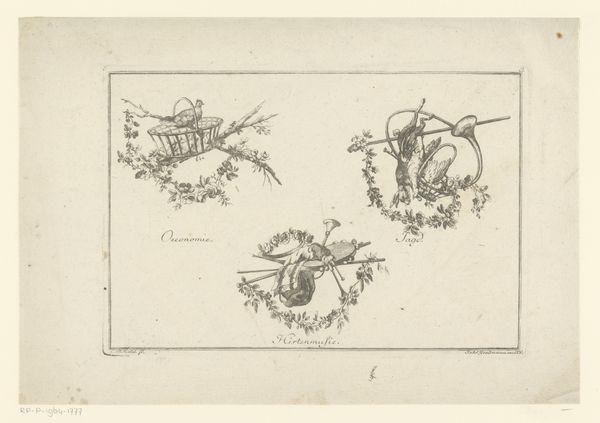
print, etching
# print
#
etching
#
plant
#
symbolism
#
realism
Dimensions: height 63 mm, width 94 mm
Copyright: Rijks Museum: Open Domain
Editor: Here we have Jan Mankes's etching from around 1910, "Mouse, Shell, and Thistle." It's small and delicate, almost a whisper of an image. What strikes me is the strange composition – these very different objects placed together in this muted, earthy palette. How do you interpret this work? Curator: Formally speaking, the work presents a fascinating study in contrasts. The textures are particularly notable. Consider the smooth, patterned surface of what appears to be a shell, juxtaposed against the spiky thistle and the subtle gradations in the mouse's fur. It’s a play between the geometric and the organic. Do you see how Mankes uses line and value to differentiate these forms? Editor: Yes, I see that the etched lines define the shell’s pattern clearly, making it look almost like a constructed object, while the mouse and thistle are softer, more integrated into the background. Does this contrast suggest a symbolic meaning? Curator: One could consider that, but focusing purely on form, note how the composition itself creates meaning. The shell acts as a grounding element, stable and weighty, while the thistle adds a dynamic, almost unsettling element with its sharp, projecting thorns. The mouse seems to mediate these extremes. Editor: That's a helpful way to look at it – I hadn’t considered how the shapes themselves contribute to the feeling of the piece. So, even without knowing the artist’s intentions, we can still analyze the work through its formal elements? Curator: Precisely. By examining line, texture, composition, and contrast, we gain a deeper understanding of its structure and, thus, its potential meaning. The relationship of each part shapes our reading of the whole. Editor: I’ve always been drawn to symbolism in art, but this formalist approach offers a different kind of insight, allowing us to really see how the artwork functions on a purely visual level. Curator: Indeed. It encourages a careful and sustained observation, revealing layers that might be missed with a solely symbolic reading.
Comments
No comments
Be the first to comment and join the conversation on the ultimate creative platform.
